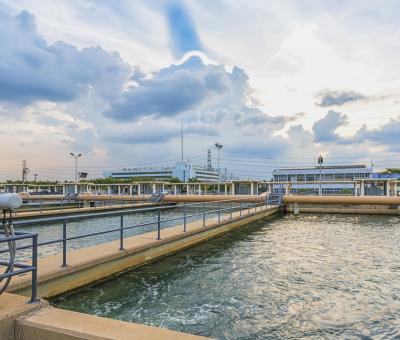The VTA mudinator® is a world first in the dewatering of sewage sludge. This innovation from the VTA Group’s research and development department makes utilisation and disposal much more cost-effective – with enormous savings to be expected at a medium-sized plant.
In the development of the VTA mudinator®, the rising costs of sewage sludge disposal were a key focus. These costs are becoming increasingly problematic for small and medium-sized treatment plants. As the law becomes more stringent, the option of using sewage sludge in fields for agricultural purposes will no longer be possible in the future.
So what are the alternatives?
Ultimately, the only remaining option for sewage sludge disposal is thermal utilisation. Because the financial outlay for the process of incinerating sewage sludge is increasing significantly, the costs incurred by treatment plants for disposal are also rising. In Germany, for example, prices of over 100 euros per tonne are no longer uncommon. Cost-conscious in their approach, particularly in the municipalities, more and more treatment plants are therefore making efforts to achieve the best possible rate of dewatering.
Technical approaches to solutions for cost reduction
The VTA mudinator has already been presented in detail in Laubfrosch (issue 79). The new technology makes is possible to increase the rate of dewatering of the digested sludge by up to 5 percentage points. This means that the machine can be refinanced in as little as three years, depending on the size of the plant. The VTA mudinator® has by now been proven in practice and since its introduction and market launch, numerous successful laboratory tests and trials at large plants have been carried out. It became apparent that – although a wide range of different dewatering aggregates were in use in the large plant trials – corresponding results were achieved on a laboratory scale. In short, the practical test delivers what the lab promises.
Laboratory test vs. large plant trial
As with the large plant trials, a VTA mudinator® adjusted to the appropriate scale is also used for the laboratory analysis. The aim is to use ultrasound to optimise the structure of the sludge, so that in conjunction with a flocculant, charge balancing is improved. This produces a more shear-stable floc, optimising the rate of dewatering. In a sample calculation based on a 50,000-PE plant, the payback period for a VTA mudinator® can be easily shown. With savings of 36,000 euros per year, the VTA mudinator®, including investment, operating costs and depreciation, will pay for itself in just under 2.5 years.
What follows is a presentation of two large-scale trials at treatment plants which were previously tested in the lab with the VTA mudinator® and VTA Biocitran®. In this situation, the acoustic irradiation time, the energy input and the polymer quantities were determined and applied 1:1 in the large-scale trial.
Spreading of sewage sludge on fields will no longer be possible in the future; the only remaining option for disposal is thermal utilisation.
Treatment plant 1
In this example, the sewage sludge is dewatered using two identical screw presses. Feeding is carried out centrally through a sludge pipeline with a volume of around 3 m³/h. After conditioning of the polymer (430 l/h of a 0.28% solution), both dewatering units achieved almost 20% dry substance content. For the on-site trials, the VTA mudinator® was then positioned in front of screw press 2, while screw press 1 remained unchanged. Over the duration of the trial, the untreated digested sludge did not achieve a constant rate of dewatering, and even deteriorated by around 1 percentage point. The sludge that was pretreated with the VTA mudinator®, by contrast, improved the rate of dewatering by 1.5 percentage points. With the laboratory plant, the trial was constituted in a similar way. Having found the appropriate settings and parameters for the sludge to be treated, the laboratory test plant achieved an improved rate of dewatering of 2 percentage points. The laboratory results were therefore then confirmed exactly in the large plant trials. In addition, the pre-selection saved a lot of time and increased efficiency.
Treatment plant 2
At the second treatment plant, 3.5 m³/h of digested sludge was fed into a screw press. Polymer addition was approx. 430 l/h in a 0.2% solution. During standard operation, an average of 24.9% solid substance discharge is achieved here. In the laboratory tests, VTA chemists again determined the optimum settings. In this case, the laboratory plant (VTA mudinator® in conjunction with VTA Biocitran®) achieved an improved rate of dewatering of up to 4 percentage points (almost 29%). In the large plant trial, both the VTA mudinator® and the use of VTA Biocitran® in conjunction with it were tested (the product is presented in Laubfrosch issue 79). The combined use of the two innovations achieved a solid substance discharge of 29.3% an increase of 4.4 percentage points. To further substantiate the positive results, the TR(A) value or the TR(DA,max) value for the sludge was determined in this trial. The goal of this was to again show how much water can theoretically be removed from the digested sludge by mechanical dewatering with and without treatment by the VTA mudinator®.
Field report from the VTA Group’s scientific journal “Laubfrosch”, issue 80
Aanvraag
Wenst u meer informatie over onze producten?
Neem dan contact op met onze experts, samen vinden we een passende oplossing.





